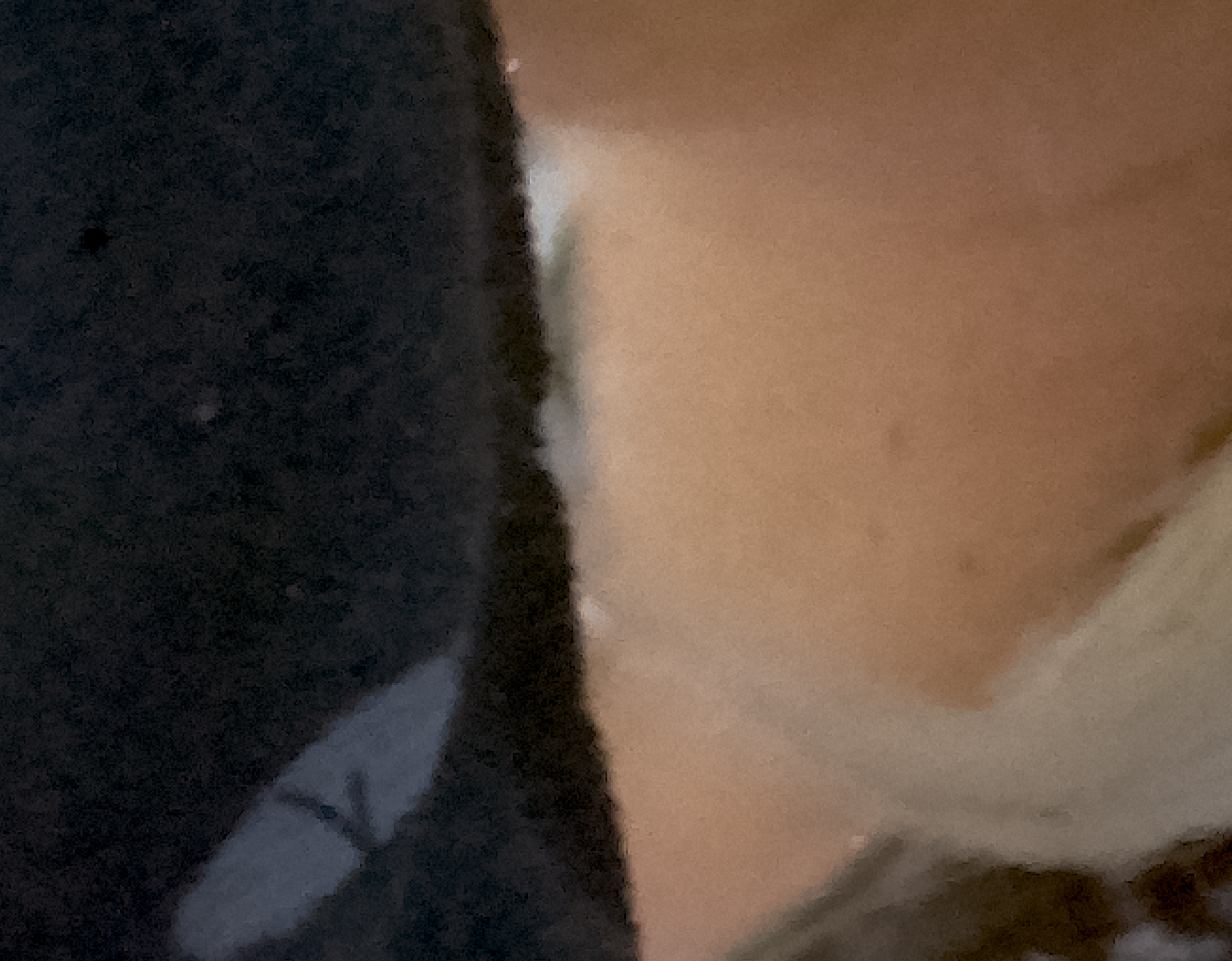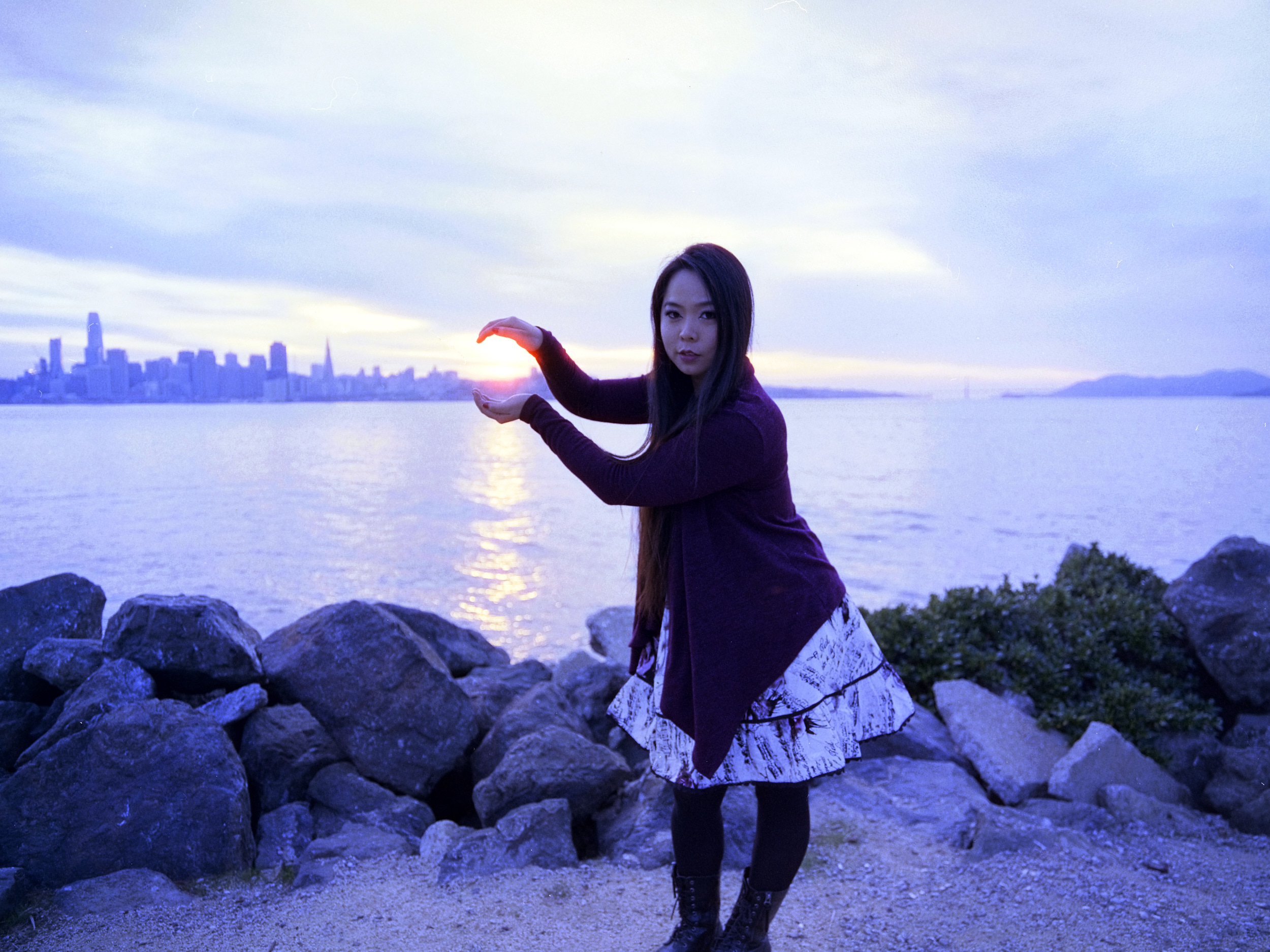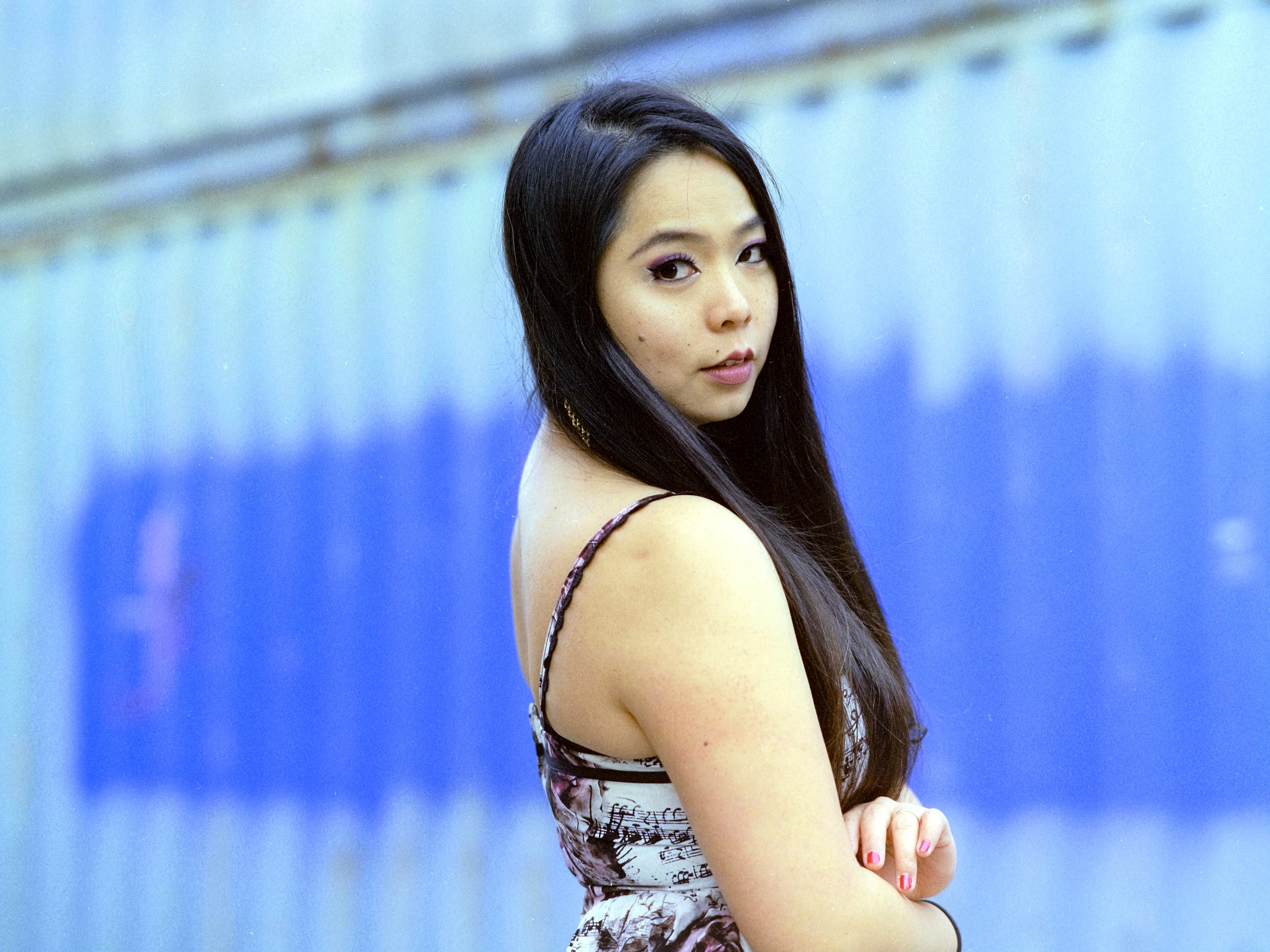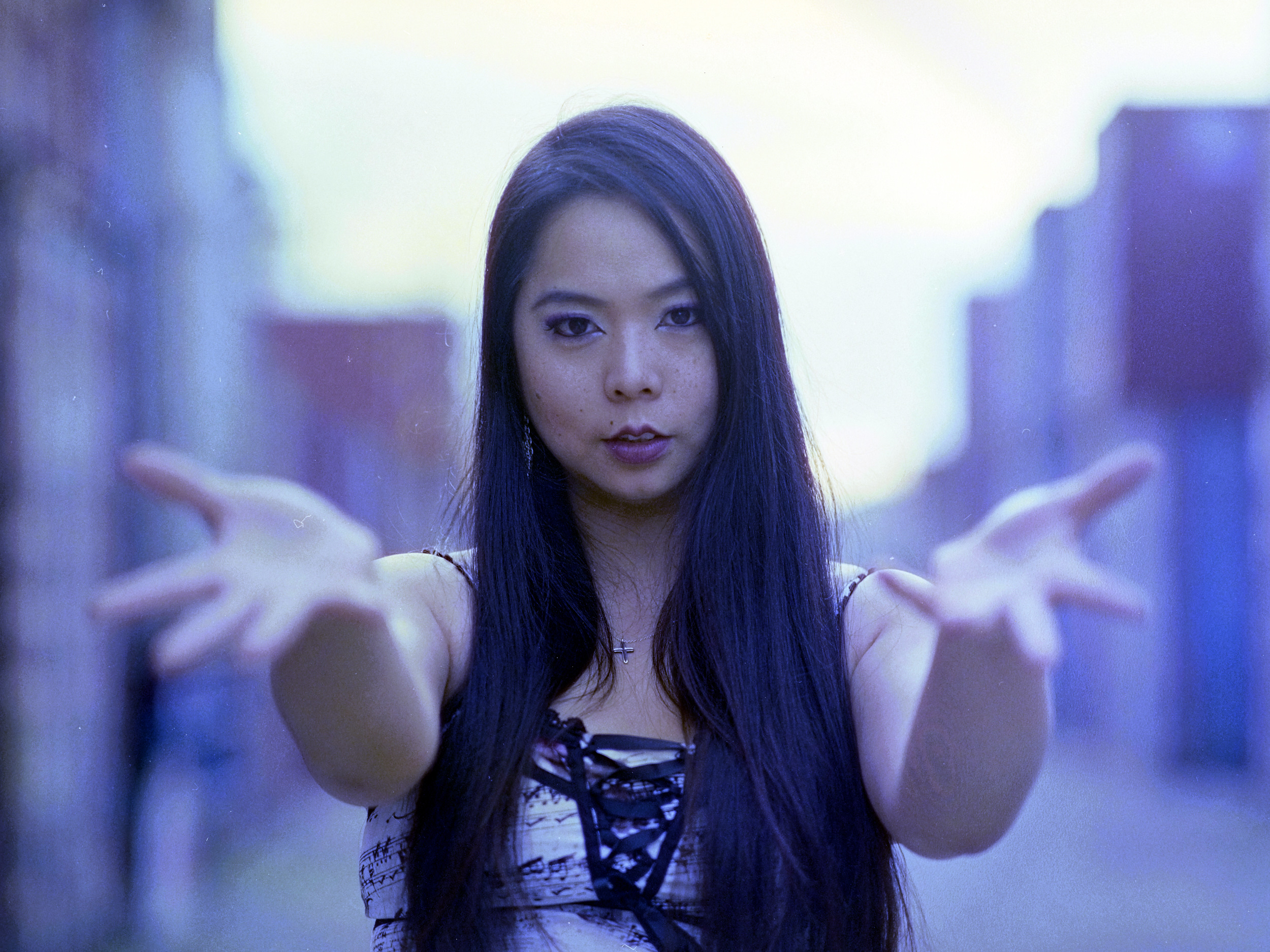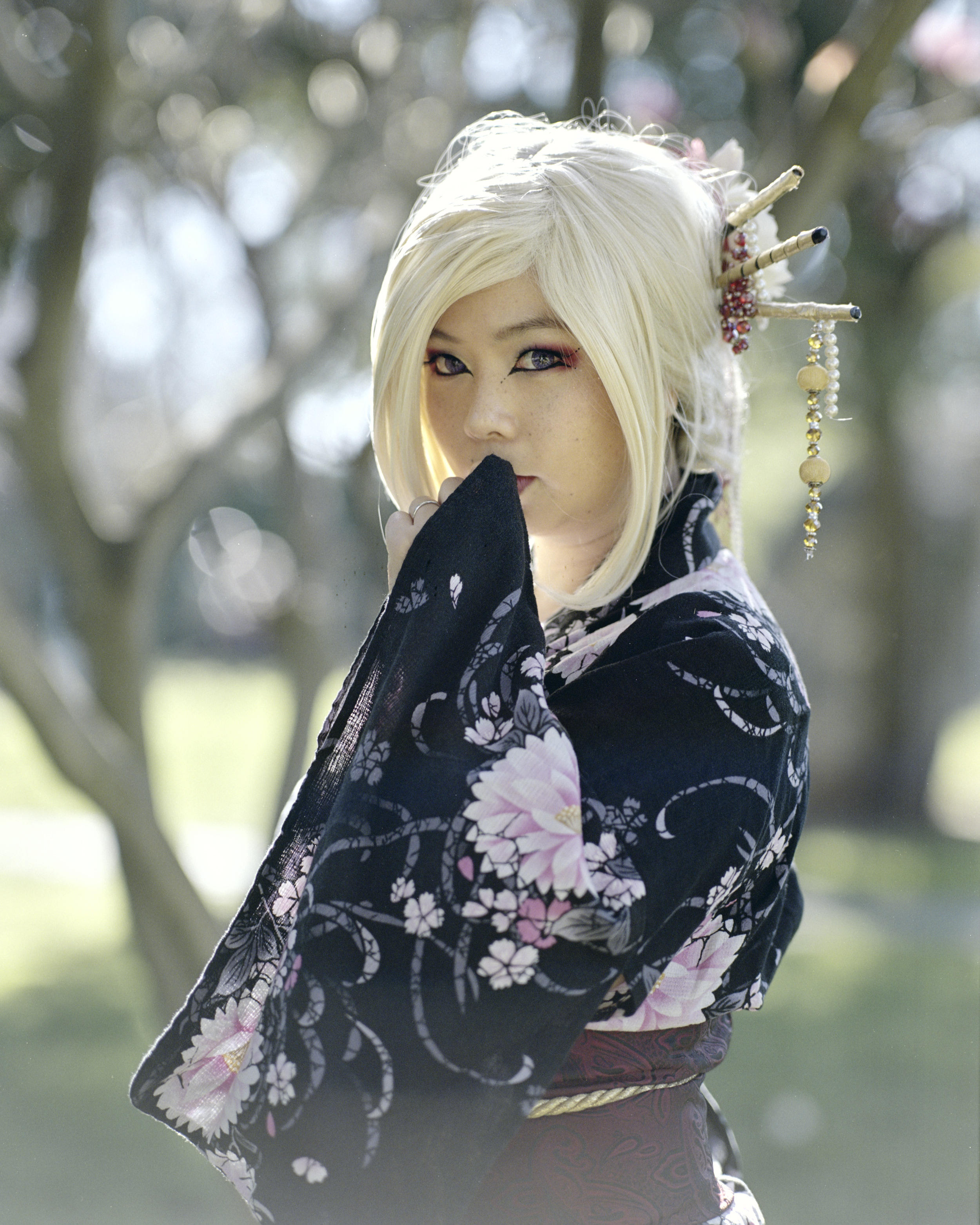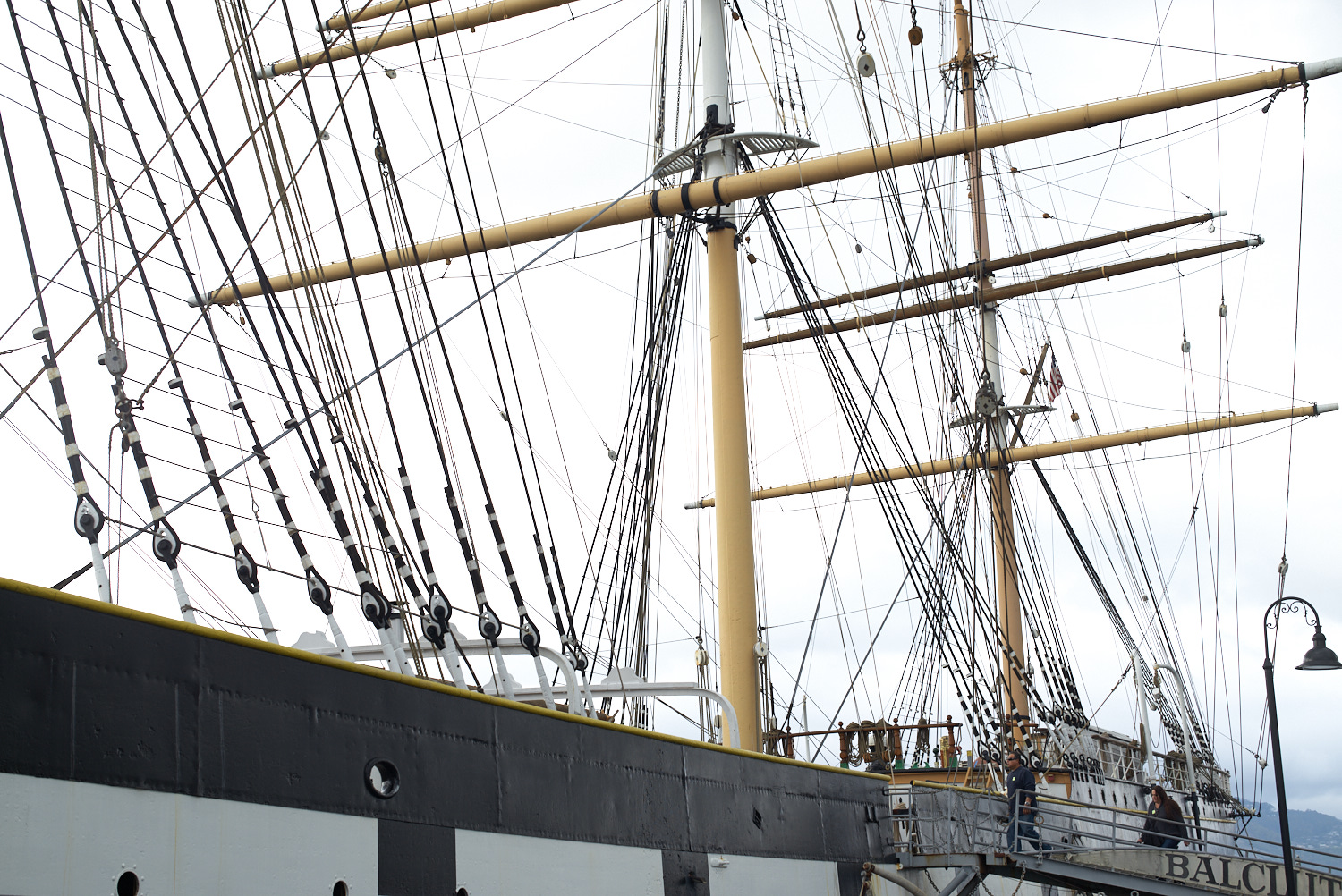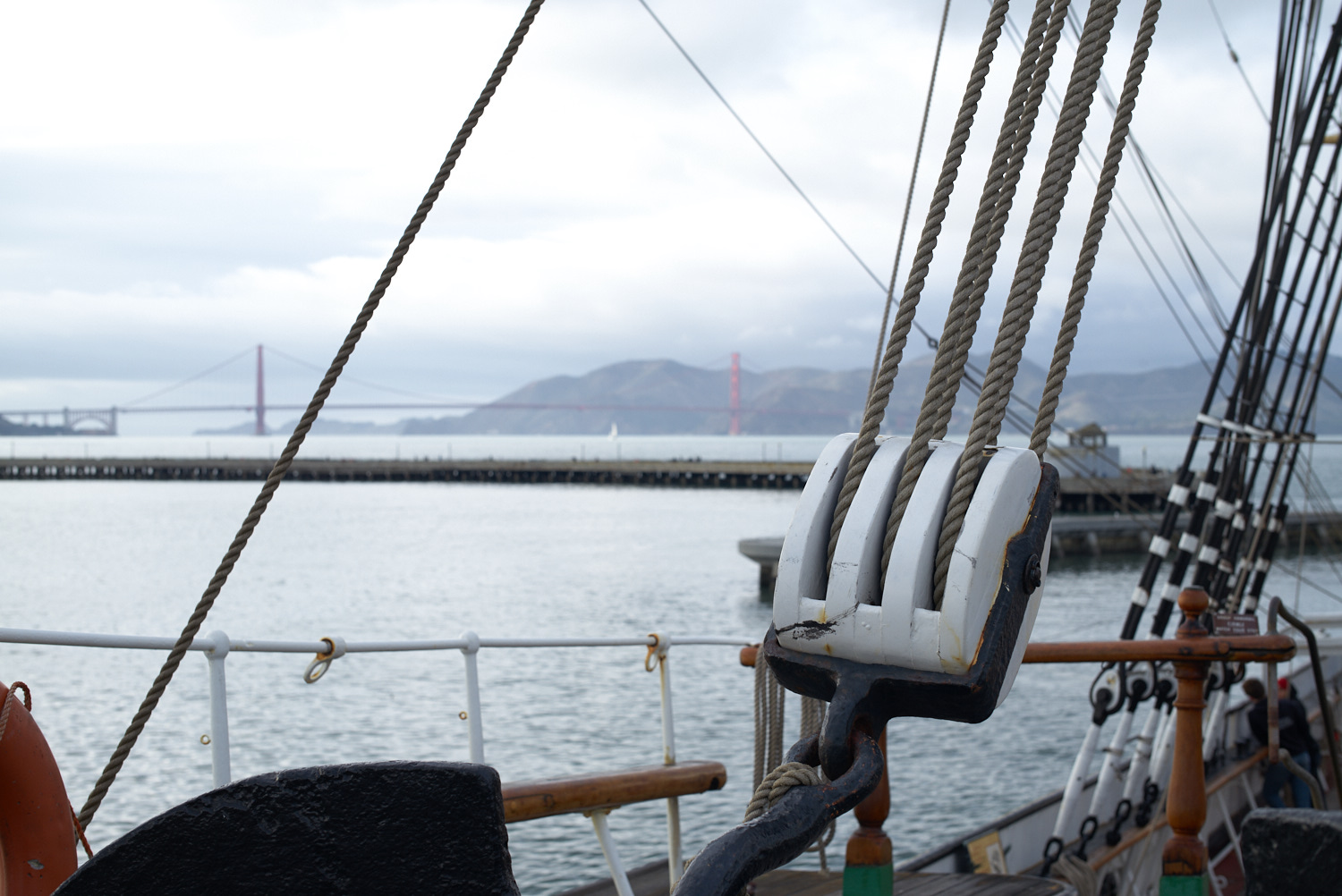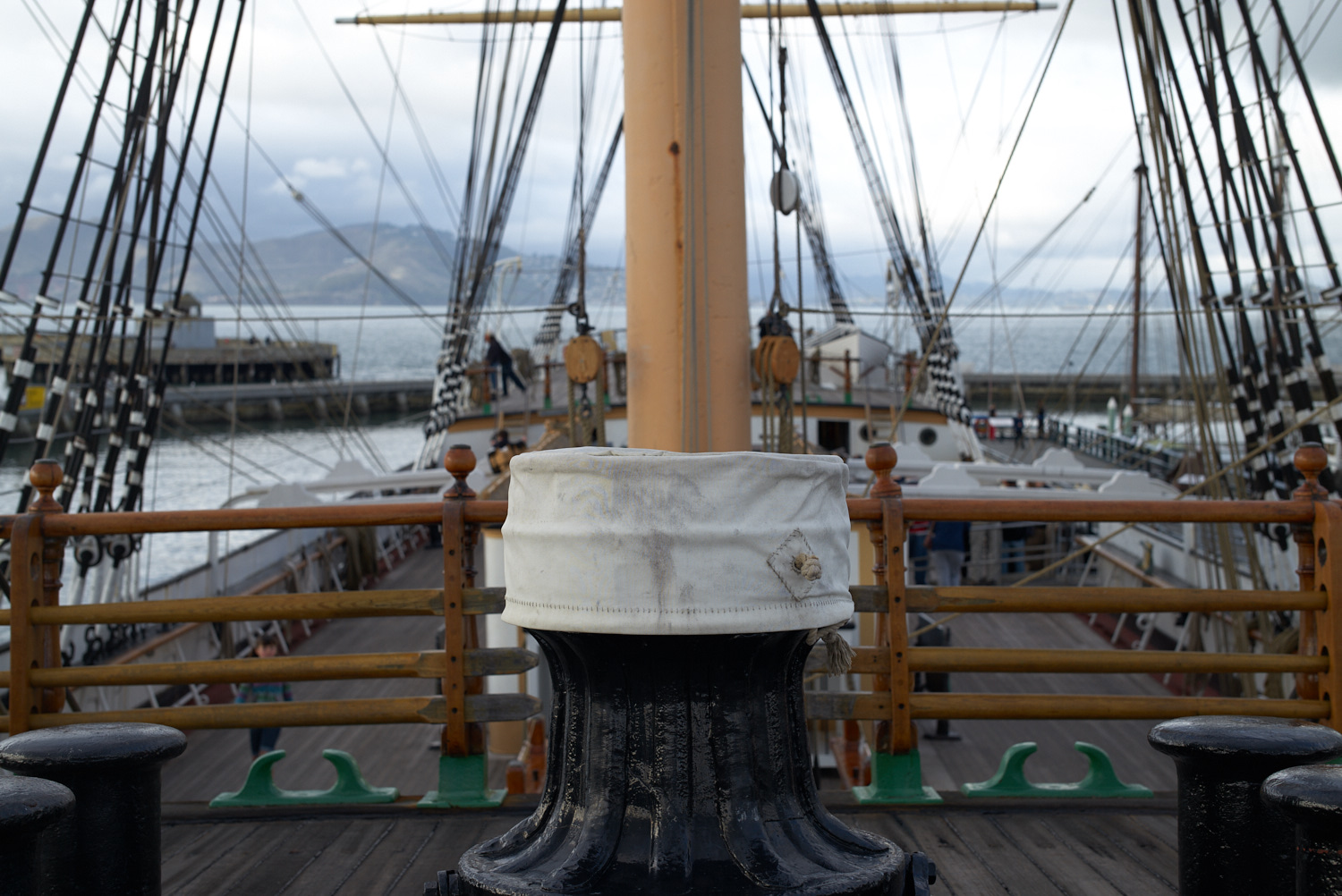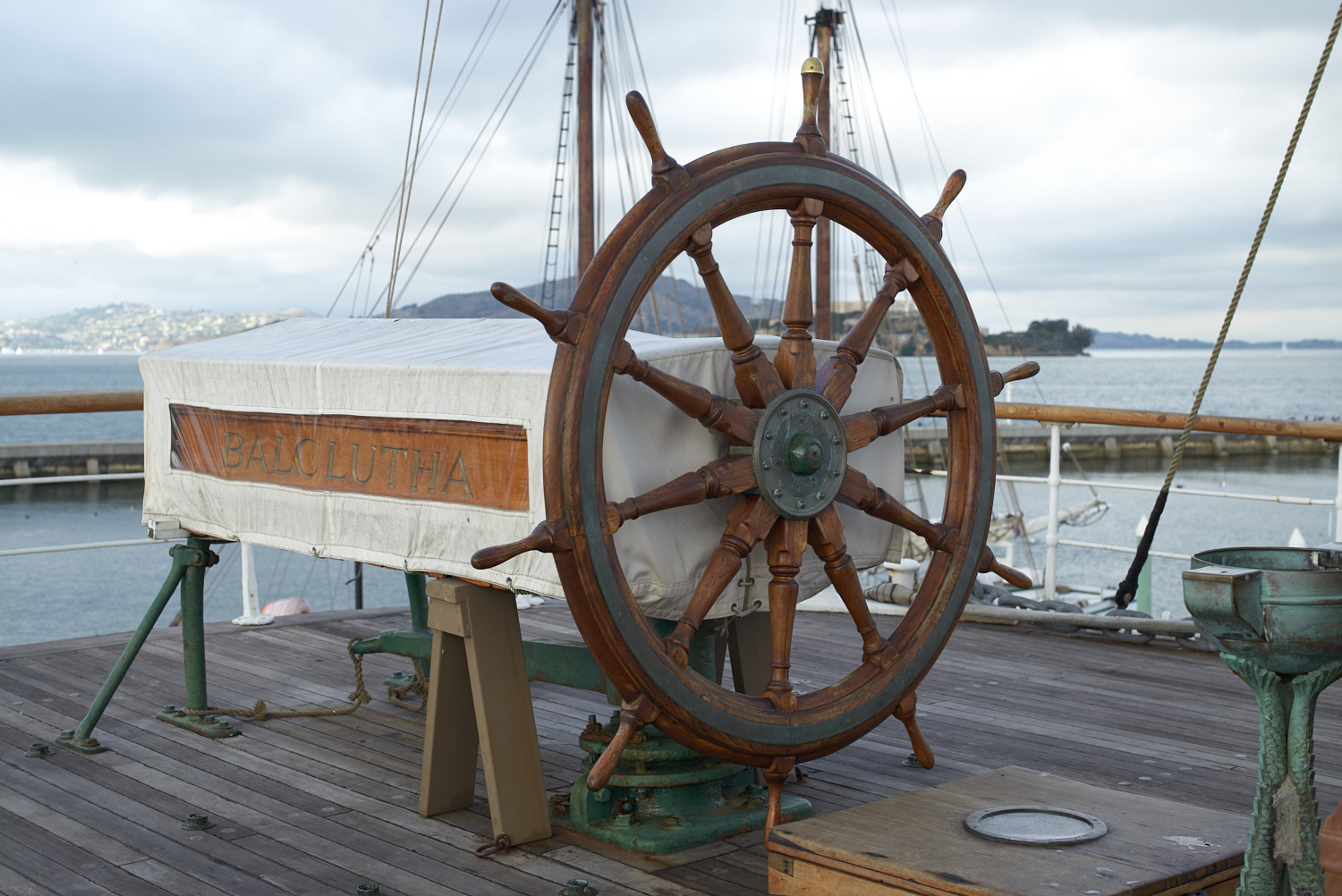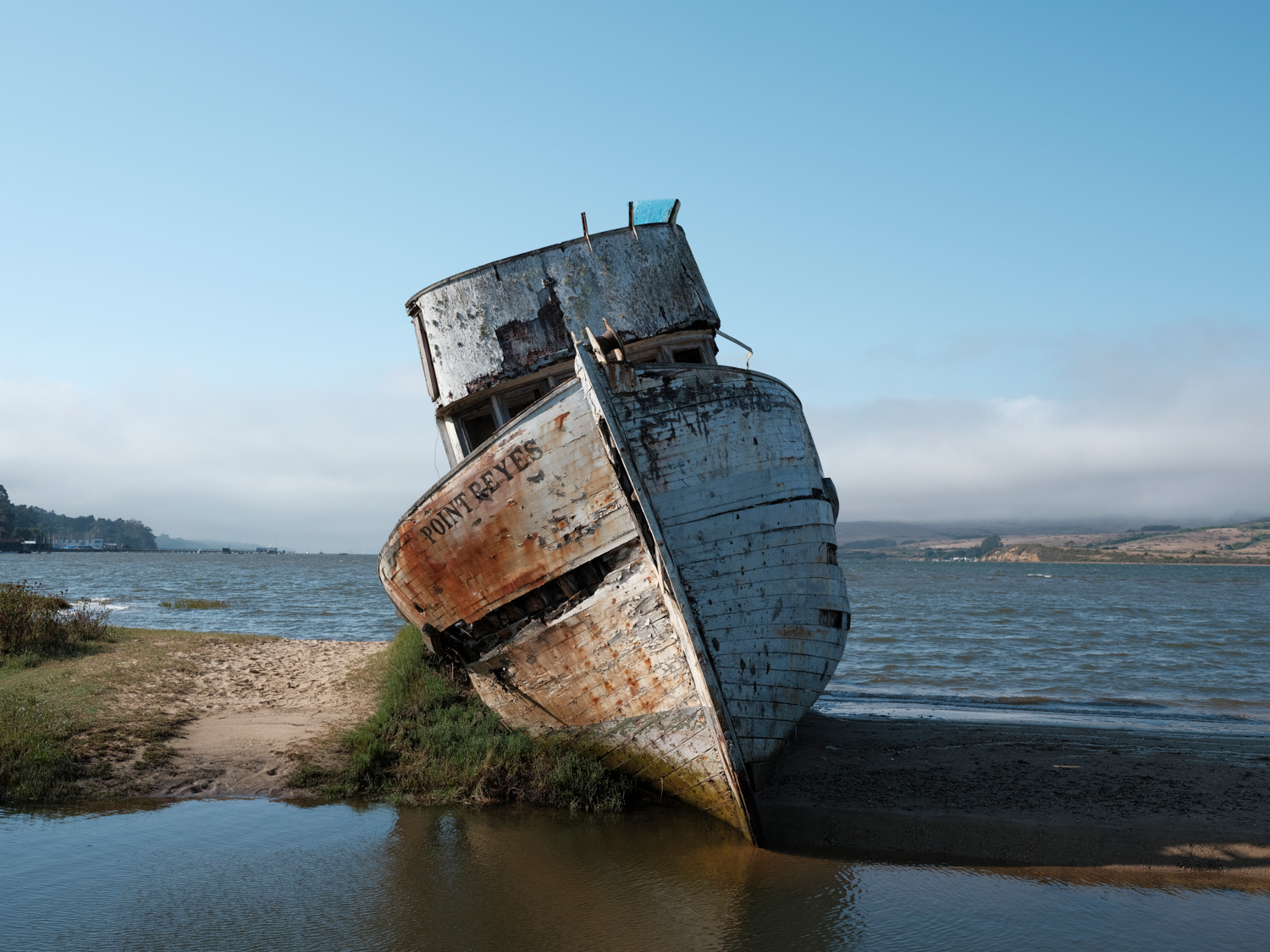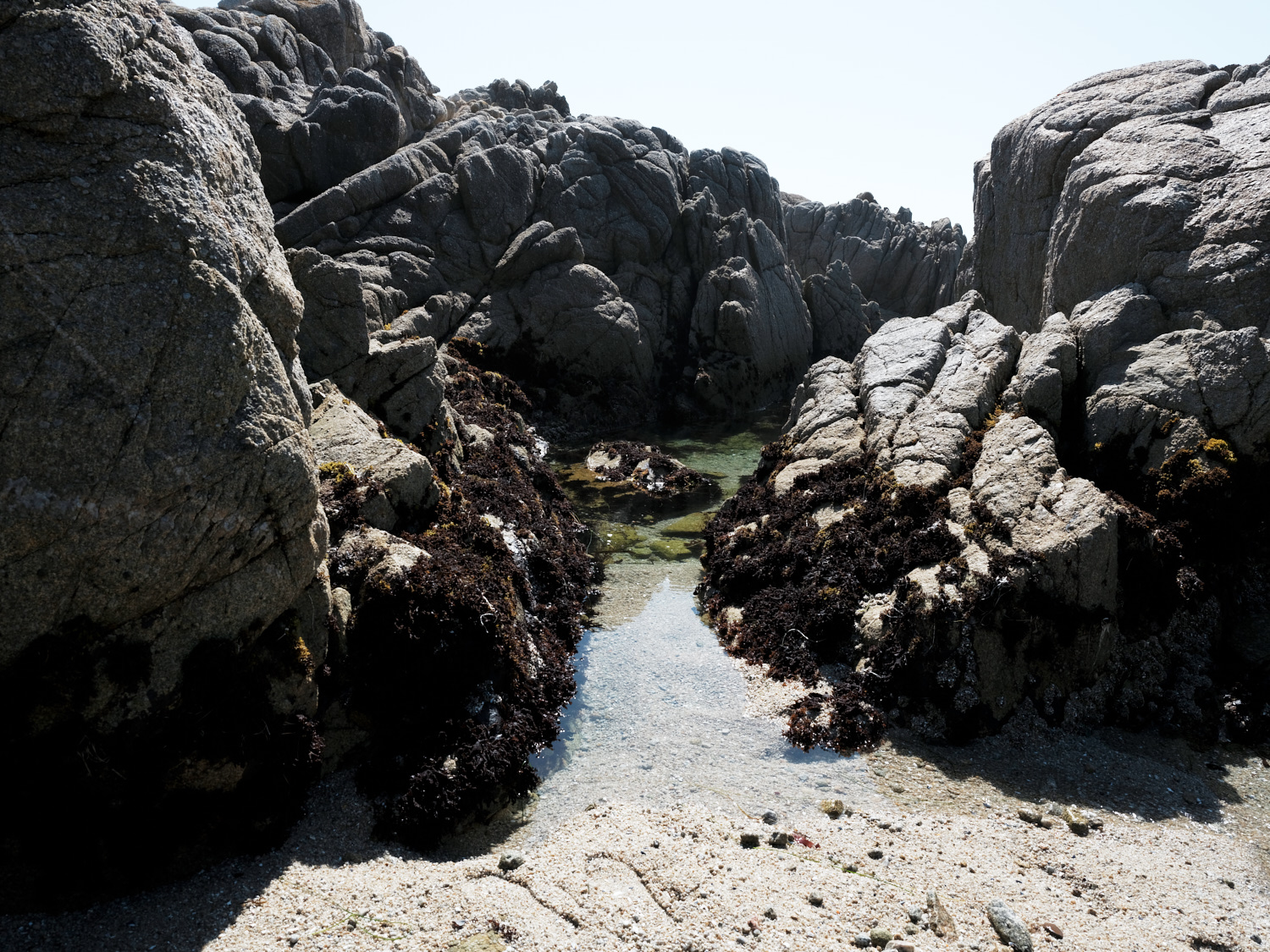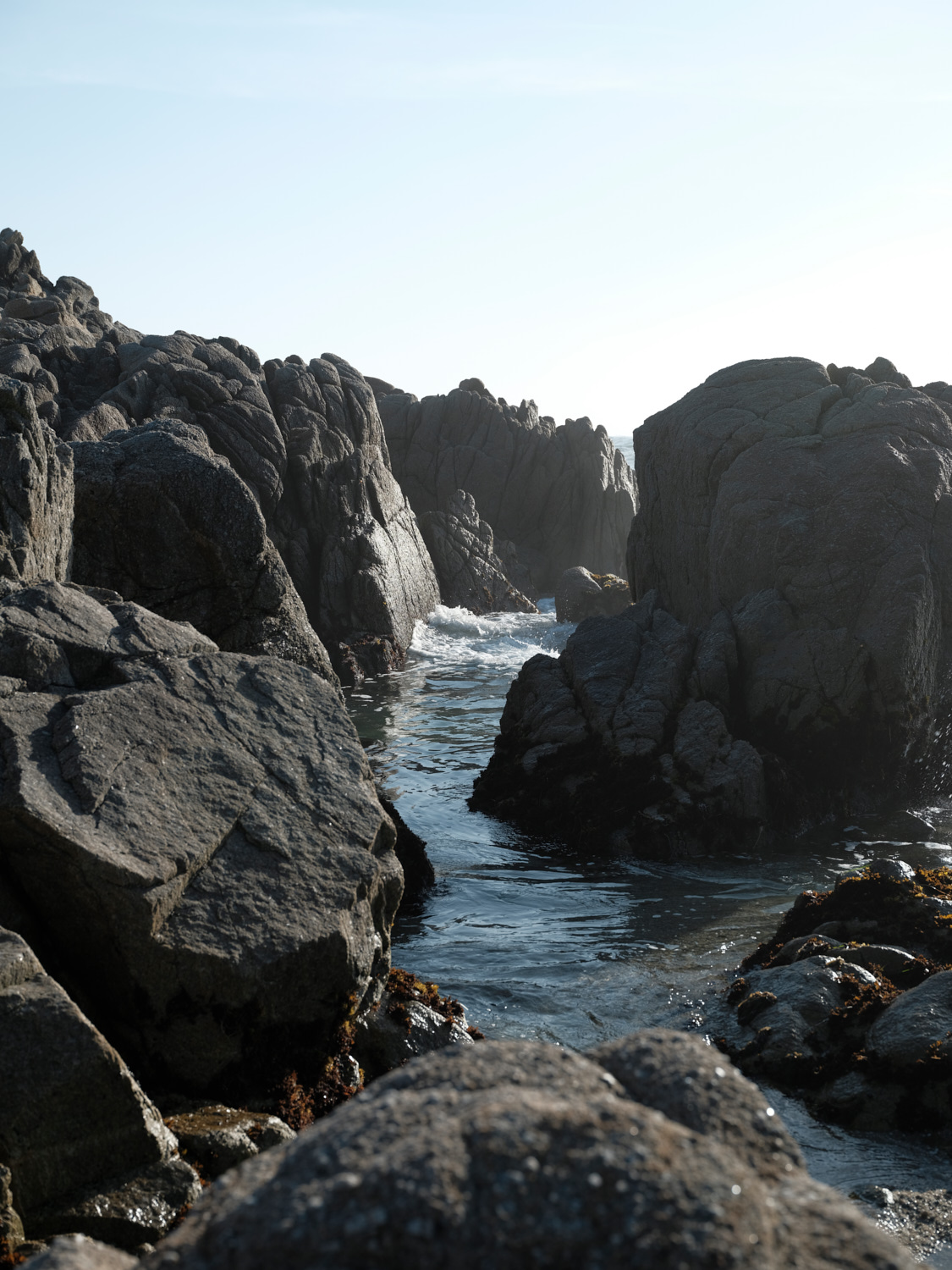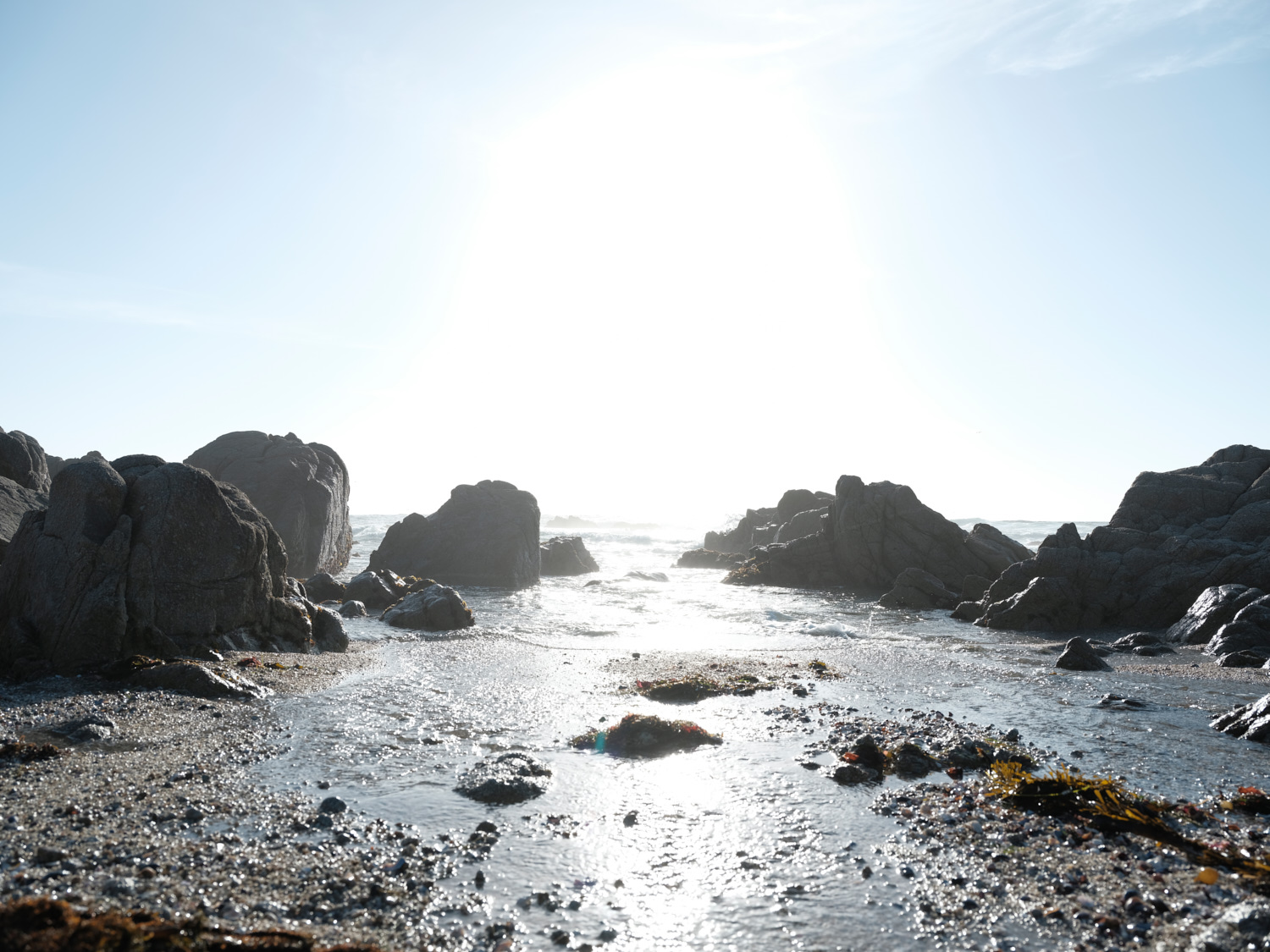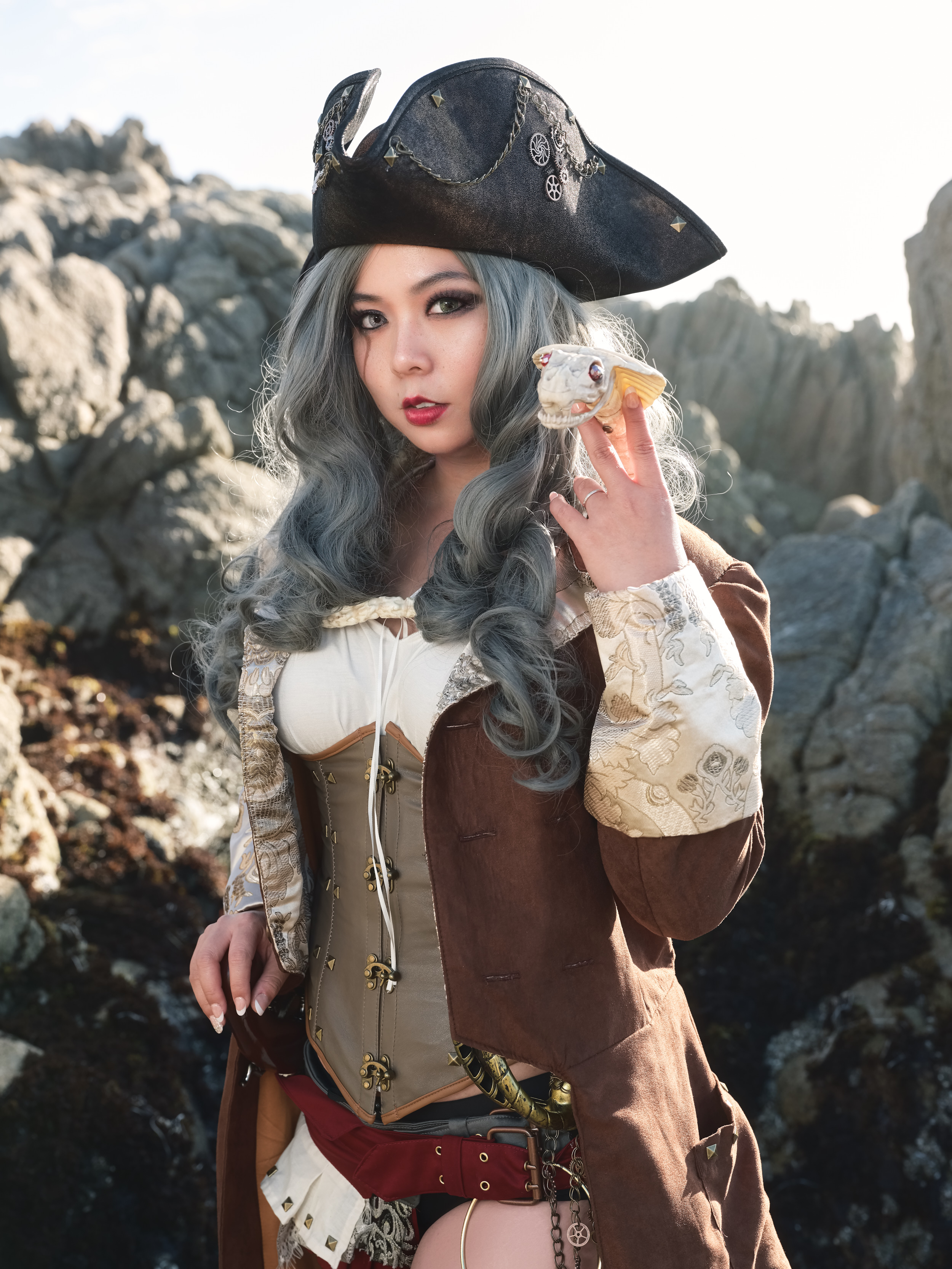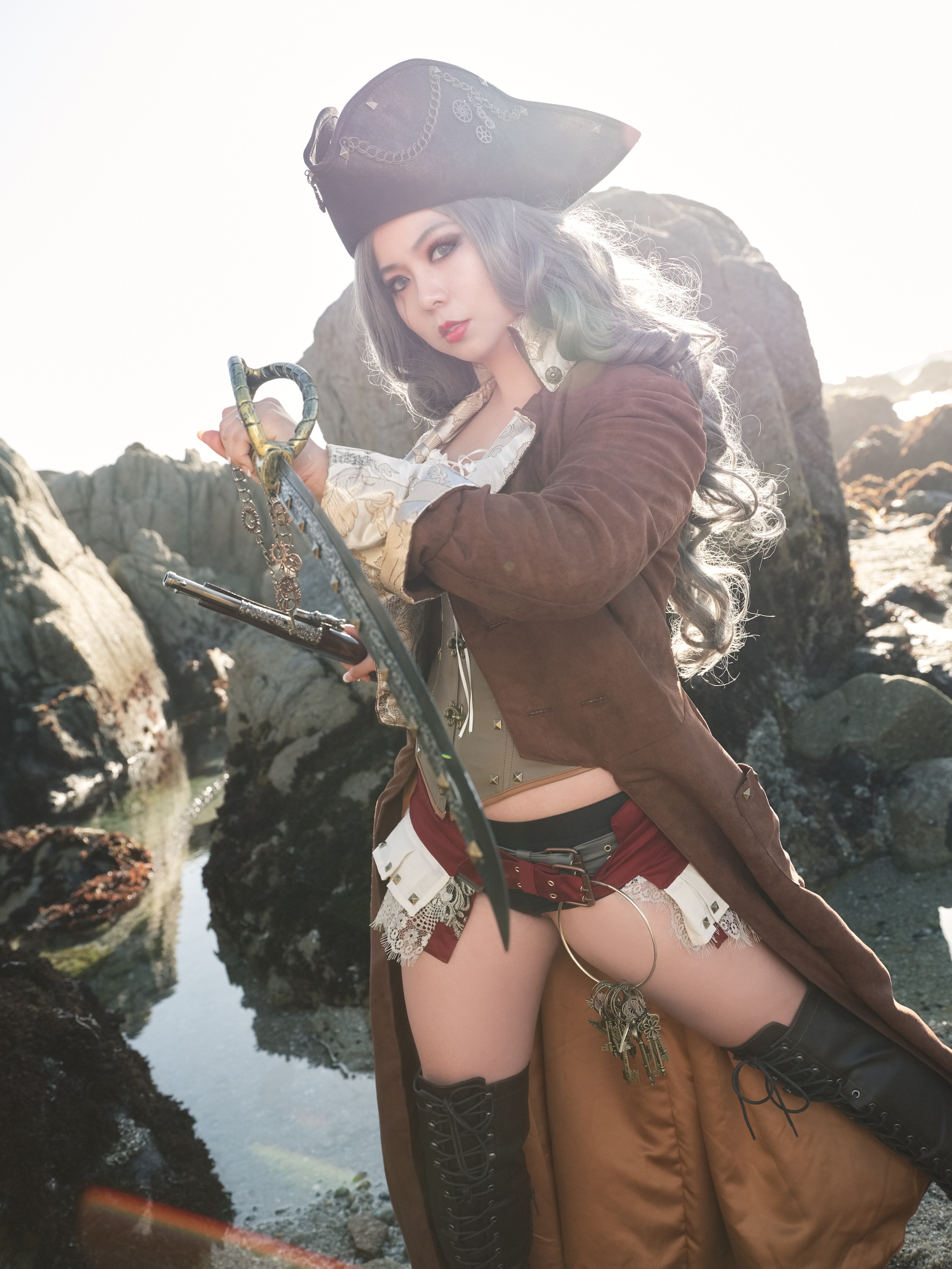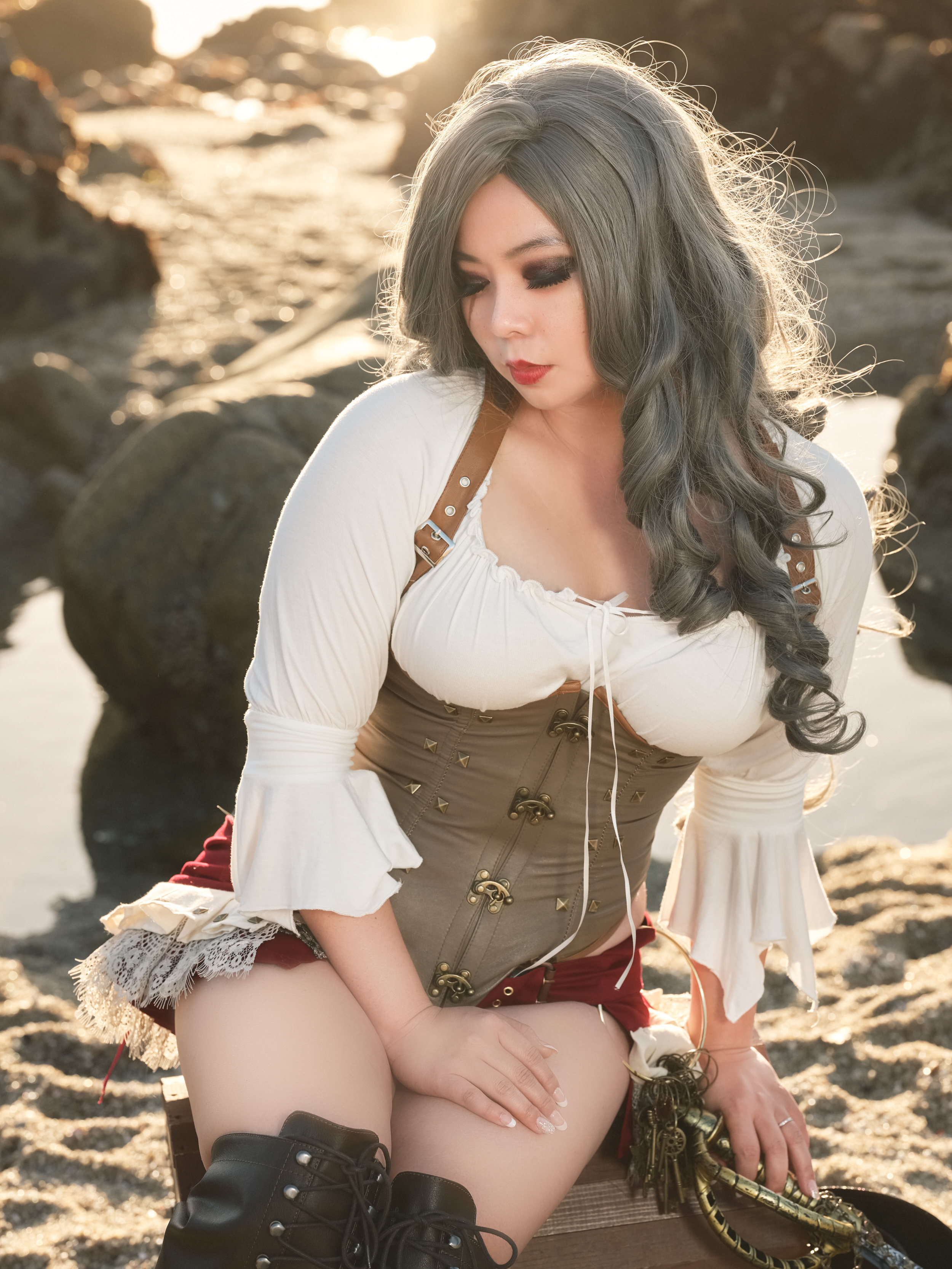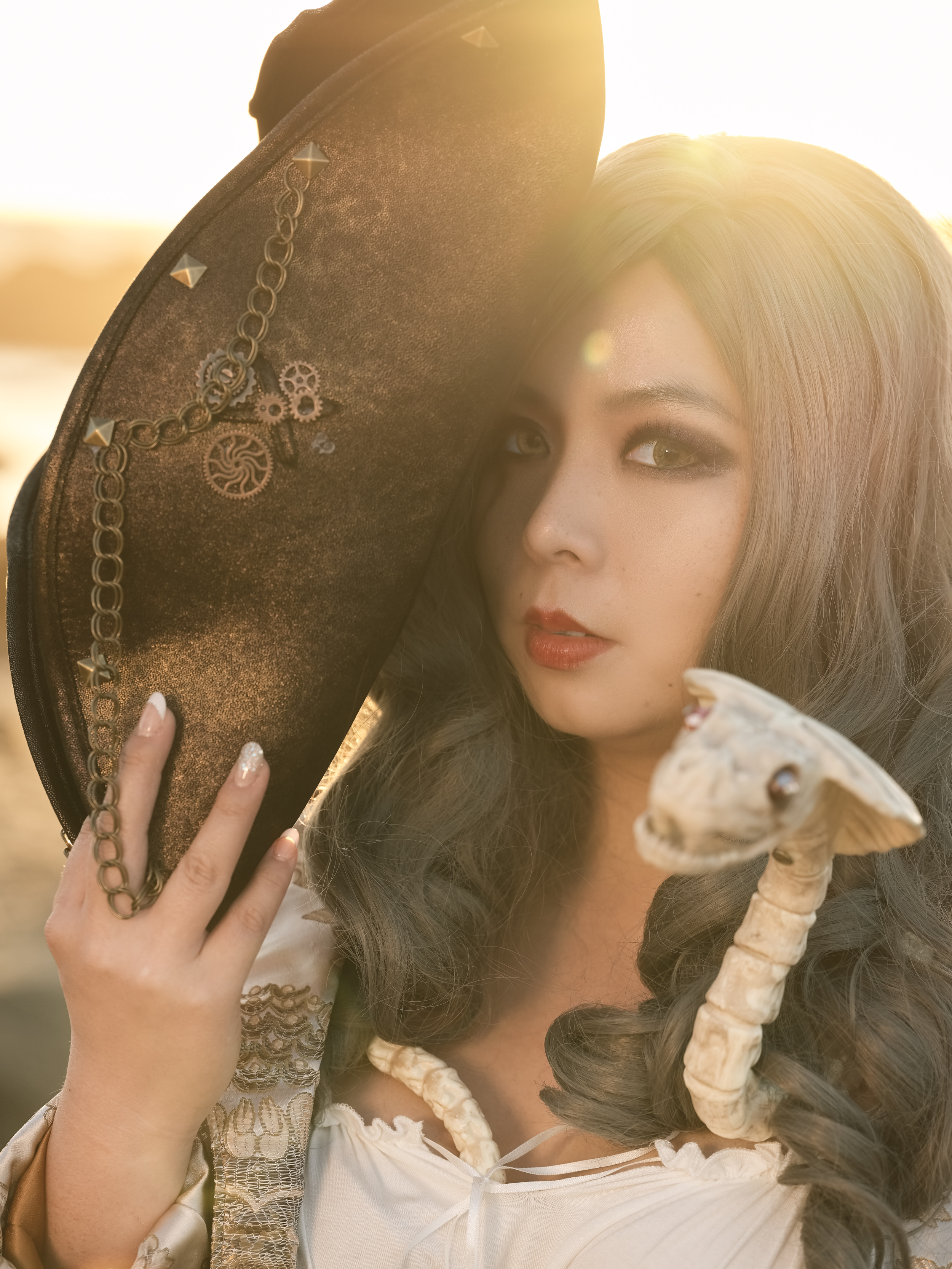The locations still looked great, but they had a different feel for them. As for the crashing waves, we simply couldn't get to the furthest rocks without a boat. Oh well, I'll concede that point.
With a final shoot location set, we were ready to go. While this location scouting journey was fraught with failures, it was a good reminder to always stay flexible and adapt the concept to what can be done.
On Location
For the day of the shoot, we enlisted the help of our friends Dan and Jon as assistants. One of them would hold the light to make sure it was pointing in the direction of the model and to keep the power cord and battery pack out of the water. Many thanks to both for assisting!
We arrived just before 5:00pm, which was about 30 minutes before golden hour started. Luckily it was low tide at the time we arrived, so the original shooting plan was followed. There was a 2 hour shooting window that I could use before the sun set below the horizon. Conditions were clear, and the model and assistants were ready. It was time to shoot!
The lighting setup was pretty simple: a single Paul C Buff Einstein E640 strobe with Kacey dish attached. I opted for a beauty dish instead of an umbrella or softbox for durability's sake. The Kacey dish is plastic; so it can handle wind, sand, rocks, and water just fine. No worries about it turning into a sail or breaking on location.


